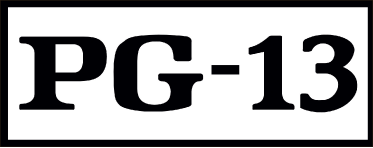Violence across the country prompts revisions in Hollywood
In a wave of nostalgia, I am brought back to five years ago when I took a trip to the theater with my friend on a rainy Saturday. We decided to watch WALL-E, not realizing the oversized agenda it served on a reel platter.
Eating my popcorn and enjoying the day, I noticed that I was in the middle of an R-rated movie trailer about, essentially, torture. Though it was only 30 seconds, it lasted longer in my head.
Now, with the recent, horrific attacks, including the Boston bombing and the Newtown school shooting, the Movie Picture Association of America (MPAA) is deciding to crack down on movie ratings. In a recent proposal by the CEO of the MPAA, former U.S. Senator Chris Dodd announced new measures to take place within the movie industry.
Included in these powerful new proposals is a decision to increase the font of rating descriptions, as well as increase the size of the ratings box.
That’s right folks. You read it correctly.
According to the Associated Press, a new campaign will bring in these sweeping changes.
“The new system, rolled out as the ‘Check the Box’ campaign, will include prominent descriptions explaining why a movie received its rating. Films that might previously have been stamped PG-13 with a sentence beneath the rating will now feature those same descriptions in large type next to the ratings code.”
No doubt these changes will keep rebellious kids out of the theaters and make blasé parents stricter on their kids. But with all substantial sarcasm aside, do these changes attack what’s really important?
In the wake of the tragic events, including the shooting in Aurora, Colorado, researchers have escalated their studies into how violent entertainment affects the minds of young and old alike.
“Research by psychologists L. Rowell Huesmann, Leonard Eron and others found that children who watched many hours of violence on television when they were in elementary school tended to also show a higher level of aggressive behavior when they became teenagers,” the American Psychological Association (APA) stated.
Interestingly enough, the APA study went further, saying it had dire consequences into adulthood.
“By observing these youngsters into adulthood, Drs. Huesmann and Eron found that the ones who’d watched a lot of TV violence when they were eight years old were more likely to be arrested and prosecuted for criminal acts as adults.”
As youngsters are exposed to violent content, whether in the form of TV or video games, it makes its presence known in the minds of the innocent long before they realize it.
As someone who was blessed with parents not afraid to lay down the law and provide boundaries, I cannot stress enough the importance of parents being involved with their kids. While some say boundaries inhibit freedom, it actually encourages it.
As for the MPAA’s decision, it will have little to no effect. Those kids who find ways around the system will continue to do so. As for parents who do not get involved, their uninvolvement will, unfortunately, continue.
Noah Gittell, a reporter for The Atlantic, agrees with the foolishness of the MPAA’s move.
“But that assumes that parents can and will control what movies their children will see, an increasingly dubious proposition in the Internet age,” Gittell wrote. “If anything, advertising that a movie has ‘grisly violence’ or ‘strong sexual content’ could make teenagers want to see it more.”
My words of advice to the parents who want to be involved: set an example and stick to it. By doing this, children will look up to that example rather than look to the movies that are being produced today.
However Hollywood wants to spin it, actions have consequences.
